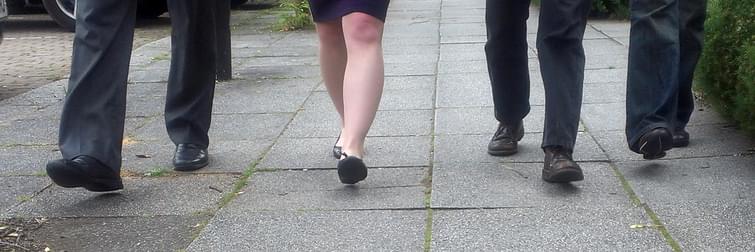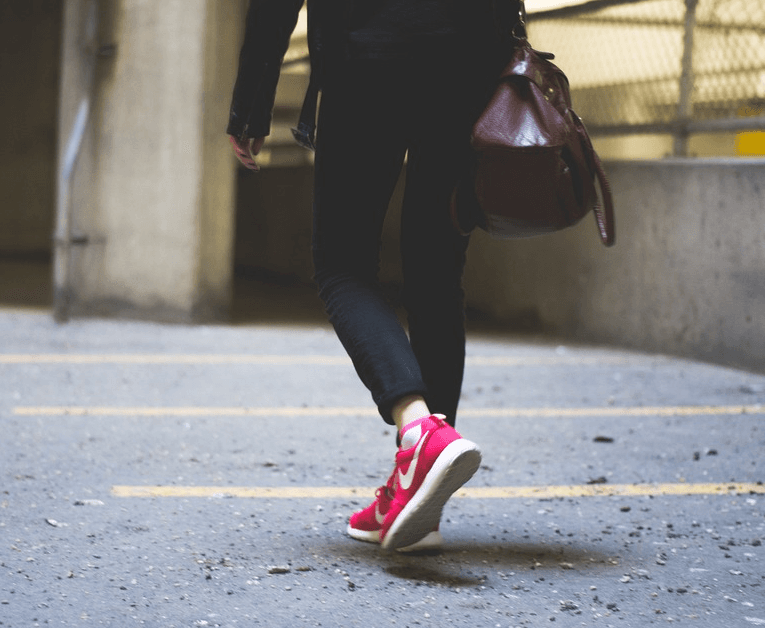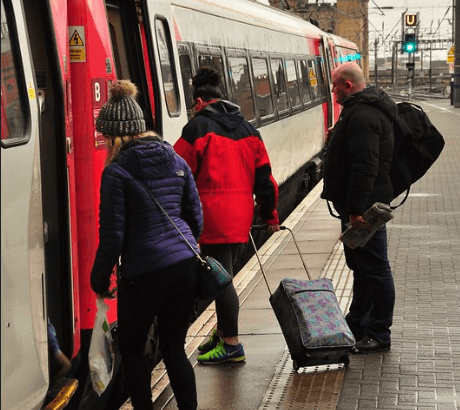
blog: #EachforEqual with Gender and Transport
Friday 6th March 2020
I recently gave a webinar on gender and transport to everyone here at ITP. What became obvious when I was putting it together is there are lots of ways gender interacts with transport. Most of them are things everyone knows about, but we might not necessarily draw them together to form a coherent, tackle-able issue.
There are many differences between men and women in relation to transport. Women travel differently to men; they combine multiple journeys more often (e.g. dropping the kids off at school on their way to work), they drive less, they very often have to travel with children, and they carry the extra stress and financial burdens of all of this. Women are also most impacted by fear in relation to transport. When I gave the webinar, this is one of the points that really seemed to strike people – clearly, not everybody realises how often women change their behaviour due to fear.
Part of the reason we don’t realise is that we consider mitigation actions that women take to be ‘common sense’. This is problematic in itself because it suggests women who don’t engage in preventative behaviours against, for example, sexual harassment, deserve to be harassed. This further compounds the fear and adds an element of blame and guilt to already frightening situations.

Generally, actual hostile or violent events are relatively uncommon – most violence against women actually occurs in the home at the hands of a partner [1], and yet we don’t warn women against cohabitation in the same way we tell them to avoid dark alleys. However, this type of violence lives in collective memory, is amplified by the media and is supported by sexual harassment (e.g. catcalling) for many women in their daily life. This means that although it is statistically unlikely, the fear of assault from strangers on the street has great power over many women.
Following my webinar, one of my female colleagues sent me an email about her commute home from work. She explained when travelling home she must walk along the path which runs parallel to the tram lines, with undergrowth and trees to one side and then down a short alley home. It’s a popular path due to the tramline and its two stops but it’s not particularly well-lit, especially walking away from the tram stops. If she is home particularly late, she will get off at the stop before her own, therefore walking further along the better-lit main road in order to avoid this. She also said as she walks, she carries her keys in her hand (the keyring being a metal lightning bolt) which could inflict some serious damage. She said without the keys, she wouldn’t feel safe enough to walk this route home.
To build on this, I decided to speak to some of my female friends on the same subject. I’ve found that when first asked if they take any precautions when travelling most women initially say no. However, once they begin to think about it, a range of options come forward. A recent discussion over brunch with two of my best friends yielded the following:
- Both friends agreed that they would never sit alone on the top deck of a bus when travelling at night.
- One of my friends said she avoids wearing headphones when walking alone at night. This means she is able to hear if someone is behind her. The other friend said when she is travelling alone at night, particularly on the bus, she will often wear headphones but not play music. She feels that this signals that she is not available to talk to, but also allows her to maintain awareness of those sitting around her.
- Both friends said they would cross the road away from solo men when walking alone at night, even if they have done nothing to suggest they might be dangerous.
- One of them told a story of recently going to her parents’ house. Her boyfriend was supposed to be joining her, and they had intended to travel back home afterwards. In the end her boyfriend couldn’t go. Instead of travelling back late and alone she stayed the night at her parents’ house.
- One of them told me she uses an entirely different route to work in the winter. Her summer option is shorter but involves a 10-minute walk across a common to reach her home, which she doesn’t feel safe doing in the dark.

In some ways, taking small actions to protect ourselves is sensible. However, in many situations it becomes something which actively disadvantages women, particularly in relation to transport. A study in the USA found 66% of women avoid certain areas to avoid sexual harassment, and 60% avoid being out at certain times [2].
Both of these precautions are therefore having a direct impact on women’s accessibility – where they can go and when they can be there.
Tellingly, when I mentioned the 66% figure above, one of my friends said, ‘What are all of the other women doing?’. She’s right to raise this – there is a huge issue with under-reporting of how prevalent these kind of mitigation actions are (and data on women in general), often because women are taught that what they’re doing is just ‘common sense’.
When I gave the webinar to my colleagues, one of the questions at the end was inevitably, ‘What are we doing about it?’. My response was relatively pessimistic – the issues I have spoken about in this article are a result of structural, ingrained social norms which place women in a position of fear.
Working towards gender equality therefore isn’t about removing physical barriers – it’s about changing attitudes and perceptions (for everyone – not just women). We need to validate and understand the experiences of all the women who limit their options when travelling due to fear. It’s also about re-balancing power structures, which might be done by providing concrete ways for women to deal with issues if and when they do occur.
Sunday 8th March is International Women’s Day. This year’s #EachforEqual campaign is drawn from the notion of ‘Collective Individualism’. We are all parts of a whole, our individual actions can have an impact on our society and on the world of transport.
What are your thoughts on how we can work towards gender equality in transport? Tweet us @ITPtweet
